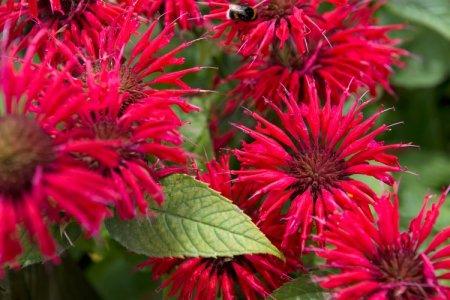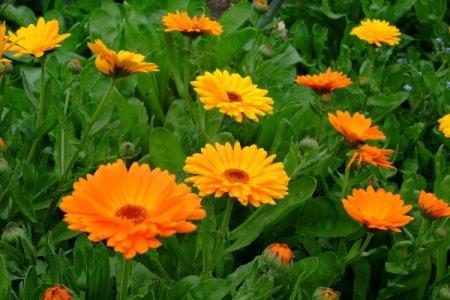
Perhaps you know amaranth as a fashionable cereal, but where does it come from and what is it all about? Incidentally, this is a wonderful ornamental plant for the garden with huge lush inflorescences and amazing unpretentiousness. Let's tell you more!
general information
Amaranth is a herbaceous annual of the family of the same name, originally from South America. Many thousands of years ago, the Indians considered it the flower of immortality and brewed a miraculous drink from it. Amaranth groats are popular all over the world even now.
Amaranth inflorescences for their characteristic shape and color are called either cockscomb or fox tail. They are equally good at any time of the year, fresh and dry. A large panicle is assembled from soft dense spikelets of burgundy, purple or yellow. It is almost impossible to isolate individual flowers visually.
Amaranth blooms in early summer and continues to bloom until frost. It has large matte leaves of a green or burgundy shade with embossed veins. Amaranth is a tall and dense plant up to 1.5, and sometimes up to 3 m.

Amaranth species
There are many types of amaranth, and they are grown for completely different purposes. There are fodder, vegetable and ornamental crops, and there are also common wild weeds.
Vegetable amaranth
This species quickly and actively grows an abundant deciduous mass. It is edible along with shoots and grains. Vegetable amaranth is considered the most useful among its relatives.

Yellow amaranth
A compact decorative variety up to only 70 cm high. One bush can have leaf plates of different shades of green, orange, yellow and bronze. The inflorescences are also yellow.

Tricolor amaranth
This amazing species belongs to decorative deciduous. Each leaf is painted in several colors at once - green, yellow-orange and crimson. Its inflorescences are also large, bright yellow-red.

Tailed amaranth
A beautiful decorative annual with large drooping racemes that persist until October. Very effective varieties, the shoots of which are cast purple.

Dark amaranth
A tall, low-branching species up to 1.5 m tall with decorative erect inflorescences. Both flowers and pointed leaves cast a spectacular purple hue.

Thrown back amaranth
This more compact and less branched species is up to 1 m high on average. It has green inflorescences, a very powerful taproot, fleecy shoots and large ovoid leaves up to 14 cm in length.

Panicle amaranth
He is just red, with red elongated inflorescences, which can be straight or drooping. He has very powerful strong shoots up to 1.5 m tall.

Amaranth care
The correct choice of soil is one of the main conditions for keeping amaranth. Otherwise, it is no more problematic than any other garden annual!
Temperature and lighting
Amaranth is very unpretentious and can withstand almost any temperature. As a southern dweller, he is accustomed to the heat and scorching sun rays. But the culture adapts well to cold snaps down to 0 degrees.

Watering
An adult amaranth does not need additional watering at the usual time. Water it only as the soil dries up, if the rainless season is prolonged. But young plants, especially during the rooting period, need to be watered often and abundantly.

The soil
The soil should be moderately moist and not acidic, as this promotes the development of root rot. Choose areas with loose and nutritious soil, and apply some lime before planting.

Fertilizers and feeding
Amaranth is fed about 3-4 times in the evening when the heat subsides. You can use ordinary mullein solution, which is even better than mineral mixtures. For the first time, nitrogen fertilizers are applied when the seedlings grow up to 20 cm.But reduce the recommended concentration by half.

Planting and breeding
Amaranth can be planted as seeds directly into the ground, starting at the end of April. Planting seedlings is carried out earlier - at the end of March, and the seedlings in this case are transplanted into the garden in the second half of May.
The seeds are planted in furrows at a depth of 1.5 cm one by one, with a distance of about 45 cm between rows and 10 cm between seeds. It is better to spend time on sowing once, than to deal with planting seedlings later. The core rhizome does not like transplants and unnecessary worries. Seedlings appear in 1-1.5 weeks.
Seedlings are planted in containers according to the same principle and left in a warm, bright place. Use a sprayer for watering and keep the temperature at 20-22 degrees. Wait for shoots in a week. When the first leaves appear, remove the weakest seedlings, and dive the rest over the peat pots.

Diseases and pests of amaranth
Most often, amaranth suffers from root rot, which leads to rotting of adult plants and the fall of seedlings. This can be avoided by choosing the right site, keeping the distance between the bushes and controlling humidity.
Fungal diseases that affect shoots and leaves are treated with fungicides. In addition, there are varieties with increased immunity - we advise you to pay attention to them.
The most common enemy of amaranth is the weevil and its larvae. They not only eat leaves and stems, but also contribute to the development of fungal diseases. Also, aphid colonies periodically settle in dense bushes. Inspect the planting regularly and use insecticides as needed.

Amaranth - photo
In our latitudes, amaranth is only gaining massive popularity, so, most likely, you have not seen it so often. In this case, be sure to take a look at our selection of photos!




























